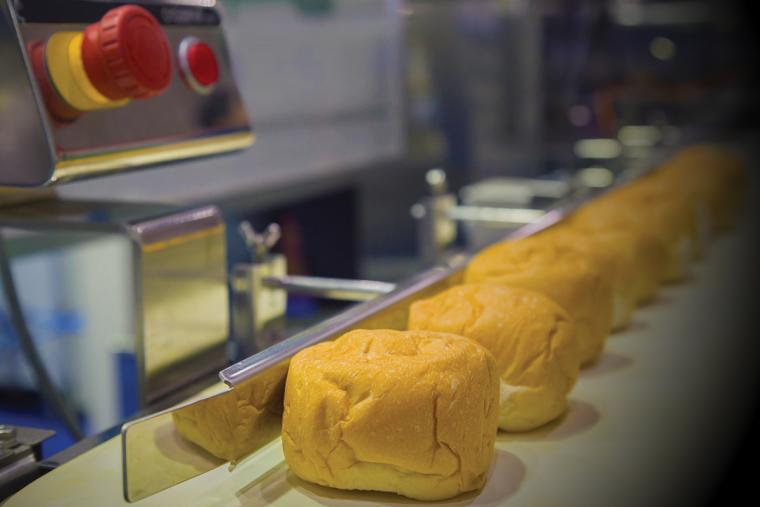
 Over the past 40 years, the commercial baking industry has experienced a lot of change. In this span of time, the industry has seen the beginnings of control automation through the use of Programmable Logic Controllers. The jump from much manual touching of product to the full use of robotics with human finger-like appendages is the change that stands out most.
Over the past 40 years, the commercial baking industry has experienced a lot of change. In this span of time, the industry has seen the beginnings of control automation through the use of Programmable Logic Controllers. The jump from much manual touching of product to the full use of robotics with human finger-like appendages is the change that stands out most.
Trends related to carbohydrates, gluten and organics have come and gone. Companies have grown, consolidated and some have gone out of business. There has been construction and commissioning of new bakeries all across North America, Europe, Africa and Asia. Companies have made many great decisions, as well as some bad ones. Workforces have transitioned from a career-minded population to a pay-for-the-day mentality.
It has always been said that one of the keys to successful business results is “location, location, location.” This principal remains important today, but just like industry changes, so does the meaning of this adage. If you go back 50, 60 or more years, “prime location” meant you were right in the heart of the action. It meant you were close to the city center. Back then, routes to end users were more condensed, utilities were readily available, workforce was abundant and willing to work and build a career.
In the 1980s, food companies sought to move out of the city center and find land or better buildings on the outskirts of town. Here, they could expand their operations to be more efficient and have room to grow without moving again. Transportation and cold storage advances made delivering products easier and into a wider geography. Workers had no issue commuting longer distances to work when the conditions and pay were improving.
Lately, we have seen developers create huge industrial parks, and in some cases, converting corn fields of small towns where farming flourished into industrial zones. They are getting the infrastructure put in place, constructing speculative buildings, preparing shovel ready sites and working with local governments to assemble deals that entice companies to locate there through creative incentive packages. These areas are attractive, well-suited for manufacturing, and prepared for further expansion. The one thing that is many times lost in the conversation today is workforce availability.
These days, workforce availability for food production is about more than just how many people are in the area and figuring out what the unemployment rate calculation might be for the location. Workforce availability must now consider a number of other details that were once taken for granted. Competitive pay, training, temporary vs. permanent roles, benefits, public transportation, working conditions, schedules and most important, the treatment of employees by management are all on the minds of today’s workforce.

With this developing dynamic across the workforce, location is more critical than ever. Being around other food processors might not deliver the best results as it was once thought. Food producers typically require high numbers of workers due to the intricate work required for assembly and packaging. Tight margins prevent companies from lunging face first into robotics, so lots of hands are required. Food processors now need to look much deeper at the area they are considering for how this current set of dynamics will affect their workforce fulfillment.
Competitive Pay
Food producers used to focus on how they could attract workers from other food producers. They always figured that due to FDA and USDA requirements, people coming from other companies would surely be trained and ready to go. In many cases, that was a true statement, but it could take a one dollar or more pay hike to lure people across the street because loyalty got in the way.
Today’s competitive playing field for new workers extends way past the food processing industry and into areas like warehouse work, fulfillment centers and fast food joints. The workforce today is even more motivated to find their lift in pay. People move fast and often to the next place when they can make enough extra money to cover their bills. Desire to work in the food industry is not the main driver it once was.
Food production workers know they are desperately needed in just about every big box manufacturing plant in the neighborhood. They can have a completely different strategy and follow the high dollar of the day. A main competitor to food processing today is the huge fulfillment centers. They pay well, sometimes have a signing bonus but can be very seasonal. They will hire up and pay nice wages for their high season and people will leave food producers for that bit of time because they know they will make more money. When that stint is over, there are plenty more jobs waiting on them in the same industrial park, sometimes right next door. Loyalty takes a back seat today to a raise in their paycheck. To attract and hopefully keep people, companies need to always be on the leading edge of pay in the neighborhood.
 Training
Training
Today, workers who will be holding positions on the production line don’t stay long enough at their previous place to get the proper training for food production so no matter what, companies that are producing food are required to, and should do the proper training from the ground up for what is needed for their specific business. This must be conducted with every new employee no matter where they came from.
Today’s workers seem to love training. In some cases, it’s so that they get a bit more development making them even more attractive to their next employer so they get the highest pay grade available. They also like training because they know that most of today’s food-related training takes place in darkened classrooms watching videos where they can relax, collect a day or two of pay and avoid the tasks on the production line.
Temp vs. Permanent Roles
In years past, workers in the food industry wanted careers. Today, they want paychecks. This dynamic has driven the need for temporary staffing agencies to be on every corner in every community and many agencies have been able to establish national footprints to meet the needs of the food producer’s labor demands. Staffing agencies of the past worked to fill a company’s roster with dedicated full-time, permanent employees. A temporary worker was a college kid working their summer. Today, that is much different. Temporary workers rule the roost these days.
The staffing agencies are now in business to fill the food company’s production line on Monday, then again on Tuesday, and not necessarily with the same people. The workers in this mix are completely fine with working for you today and your neighbor tomorrow. To combat this problem, food producers are now using a method they refer to as temp to perm, and the staffing agencies play right along. In the temp to perm process, a company may get a few candidates who are looking for a longer-term engagement, but not necessarily a career. This is helping, but not solving the problem.
 Benefits
Benefits
One might think that because of the temporary workforces that are filling the production lines are property of the staffing agency, the benefits must be at a lower cost to the company. Truth is, the cost is still there, just in a different bucket. Staffing agencies are collecting a markup on every worked hour of every employee through a service fee. These fees can range from 25 to 45 percent on top of the agreed-upon hourly wage the food producer is paying. What the agencies are providing the worker is never known to the employer, but it’s being paid by the company to the agency, no matter what.
Company benefits can be available to the temp to perm workers when they convert from temp to perm. Because of the lower wages, even when competitive, and the high cost of the benefit package, many workers are not attracted to that. Many others have declined benefits, especially medical, simply due to the out-of-pocket costs. While benefits used to be an attractant to get long-term, loyal, permanent employees onboard, this is no longer relevant in the masses.
Public Transportation
Believe it or not, access to public transportation is more important to a food processor today than in the past. Many of the workers being described in this article don’t have their own transportation. When deciding on that new site for the new plant, make sure it has a bus stop or train station nearby. If fortunate enough to be located near a residential center, the bike rack out front takes on a new meaning, too. People who can ride to work are not doing so for exercise, rather it is their only transportation. Many of the staffing agencies have a fleet of buses and shuttles and they will drop off and pick up workers at a company’s doorstep. In this new day and age, employers still must have a certain number for parking spots on site to follow local code, but many of those spots will remain empty for years to come.
 Working Conditions
Working Conditions
This is a big one. If a food producer has positions on the floor where there is a lot of lifting or bending, hot environments, cold environments, undesirable odors, heavy pushing and pulling and high noise levels, turnover will be frequent. Even if full-blown automation and robotics cannot be deployed, a food producer must find ways to alleviate these perceived hardships. These things should be considered when putting the plant together.
Many solutions are available to ease the burden of work, such as vacuum lifters for bags and boxes, self-elevating tables to reduce bending, properly designed ventilation systems and PPE (personal protective equipment) readily available and plentiful. The better the conditions, the happier the worker.
Schedules
Creative scheduling of production and the shifts associated to that work can provide a competitive advantage. Workers want their evenings, their weekends and their holidays. Time-and-a-half pay, double time and holiday pay seem to get trumped by the desire for time off. The food production plant that is working Sunday because they always have will be the ones that struggle more to keep people.
Workers prefer four 10-hour days over five eight-hour days. If overtime is in play, it’s easier to get people to work four, 12-hour days than to get them to consider a schedule that includes a total of six days, each eight hours long. Scheduling has become a differentiator in where a person wants to work.
Treatment of Employees
It’s been said that people don’t leave jobs, they leave managers. It can be a little of both, but management must be aware of the treatment that their frontline supervision is doling out on the ranks. One bad apple in supervision can create a turnover problem that will affect productivity long before it is recognized. Food producers need to invest in frontline supervisor training and development to keep this problem in check.
In summary, what once was, never is again. Food producers must be aware of what the trends and realities related to workers are in the area where they want to put their stake in the ground. Just because the neighborhood looks nice and safe, and that new tilt wall, big box,
accent painted building stands out, food production companies need to know they can staff it, or they shouldn’t go there. T&ID

